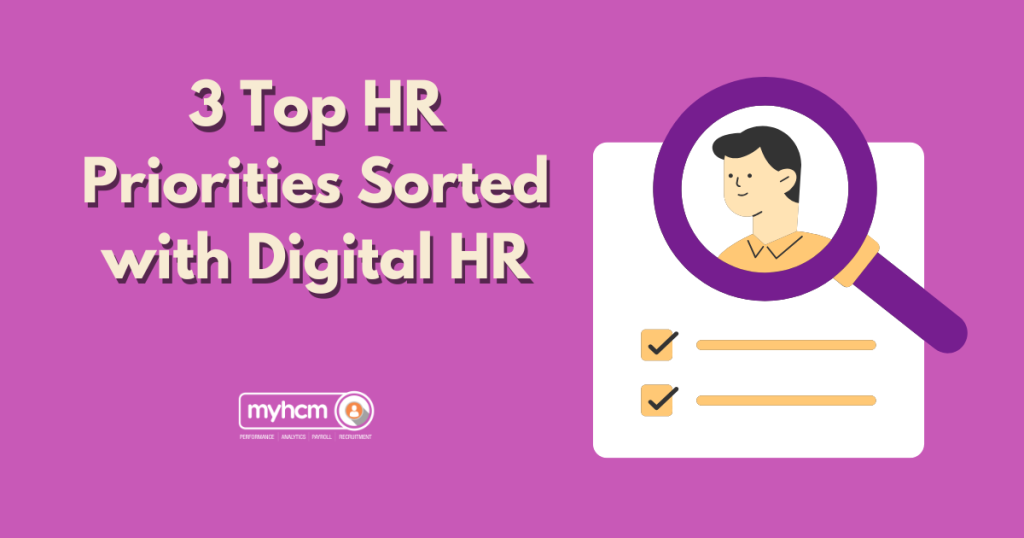Introduction to HR Priorities
The world of Human Resources (HR) is undergoing a profound transformation, driven by the rapid advancements in technology. Indeed, this digital revolution is redefining the way HR professionals work, interact with employees, and contribute to organizational success. Therefore, by leveraging digital HR solutions, HR departments can effectively address their top priorities, streamline processes, improve efficiency, and foster a more engaged and productive workforce.So let’s sort 3 Top HR Priorities with Digital HR.
1. Talent Acquisition
Talent acquisition is a top priority for organizations seeking to remain competitive in today’s job market. Digital HR can significantly enhance the recruitment process by automating tasks such as job posting, candidate screening, and onboarding. Additionally, digital HR tools can help organizations identify and attract top talent through targeted recruitment campaigns and social media recruiting.
2. Employee Engagement
Employee engagement is another critical HR priority. Digital HR can play a vital role in fostering employee engagement by providing personalized experiences, improving communication, and enabling employees to take ownership of their professional development. Consequently, employees feel more valued, motivated, and aligned with the organization’s goals. Digital HR tools such as employee self-service portals, performance management systems, and learning management systems can help to create a more engaging and empowering work environment.
3. Performance Management
Effective performance management is essential for driving employee productivity and organizational success. Digital HR can revolutionize performance management by providing real-time feedback, automating performance reviews, and enabling continuous learning and development. Digital HR tools can also help organizations to identify high-potential employees and develop succession plans.
Challenges and Considerations for HR Priorities
Now as we have sorted 3 Top HR Priorities Digital HR let’s learn about their challenges and consideration While the benefits of digital HR are significant, there are also challenges and considerations to be addressed. One such challenge is the need to ensure data security and privacy. Another consideration is the potential for job displacement as automation becomes more prevalent. To overcome these challenges and maximize the benefits of digital HR, organizations must invest in employee training and development, establish robust data governance policies, and adopt a human-centric approach to technology.
Best Practices for Implementing Digital HR
To successfully implement a digital HR strategy, organizations should consider the following best practices:
- Assess your needs: Identify your organization’s specific HR challenges and goals to determine the most appropriate digital tools and solutions.
- Involve stakeholders: Engage HR professionals, employees, and other key stakeholders in the planning and implementation process.
- Choose the right technology: Select digital HR tools that are user-friendly, scalable, and aligned with your organization’s goals.
- Prioritize data security: Implement robust measures to protect employee data and ensure compliance with privacy regulations.
- Provide training and support: Offer employees training on how to use digital HR tools and provide ongoing support.
Conclusion to HR Priorities
By leveraging digital HR, organizations can effectively address their top HR priorities, including talent acquisition, employee engagement, and performance management. Furthermore, digital HR can streamline processes, improve efficiency, and foster a more engaged and productive workforce. As a result, as the digital landscape continues to evolve, it is essential for HR professionals to stay informed about emerging trends and best practices to ensure they remain at the forefront of the digital HR revolution.
